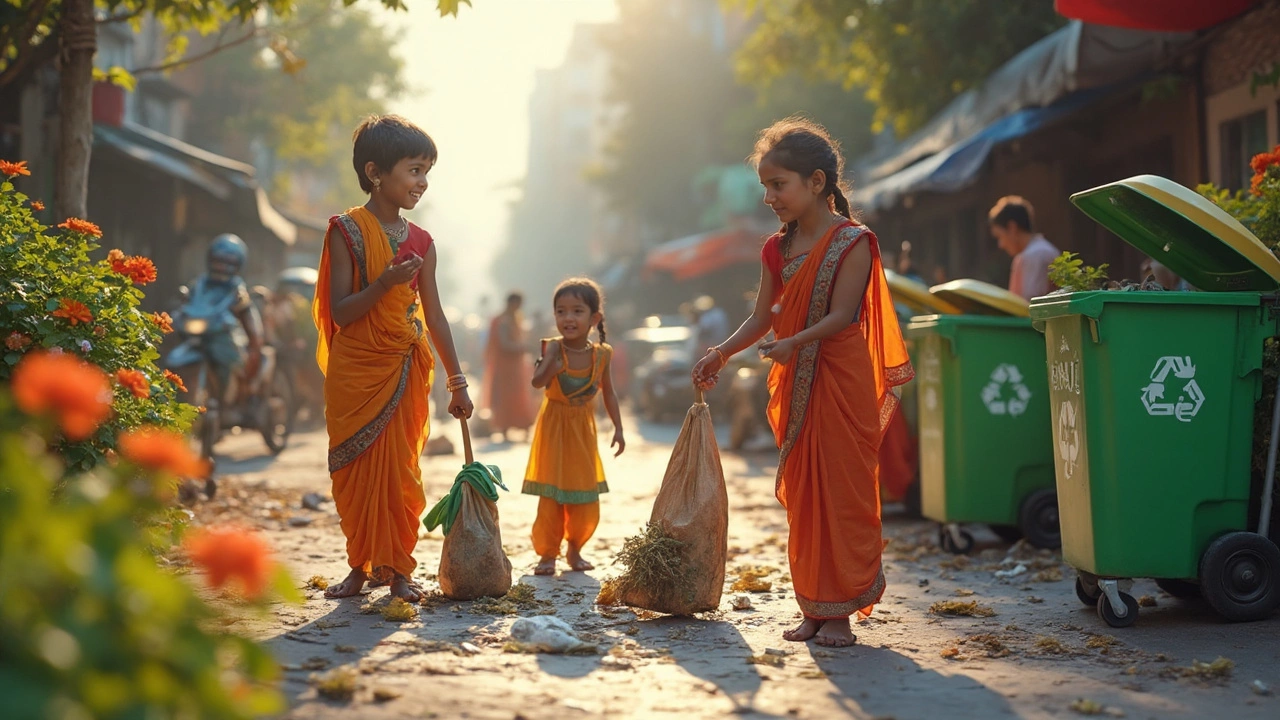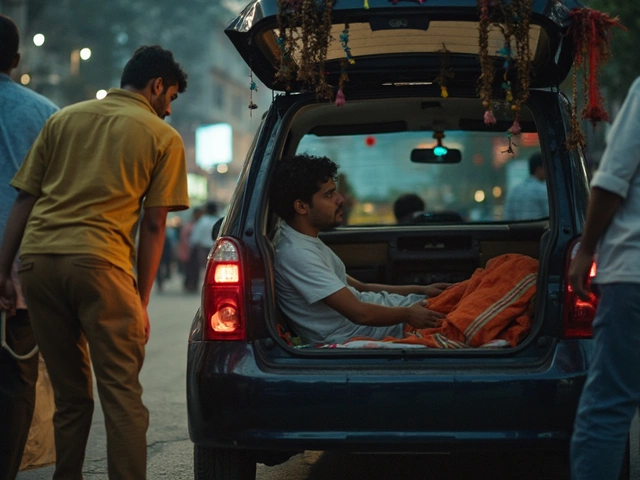Did you know that the average person walks past hundreds of pieces of trash each year and barely gives them a second glance? It feels like litter has faded into the background, almost becoming invisible. Yet, if you ask experts which environmental problem is most fixable, littering often tops their list. It's low-tech, doesn't need worldwide agreements, and you can see results in days. It’s the easiest environmental problem to solve—and the change is visible right outside your door.
Why Littering is the Low-Hanging Fruit of Environmental Issues
Let's talk about why tackling littering beats most other environmental battles in pure simplicity and effectiveness. Unlike fixing climate change or reversing deforestation—challenges that demand a global shift—littering offers instant wins. You don’t need a science degree or expensive equipment. Everyone is part of the problem and the solution. According to the World Bank, about 2 billion tons of solid waste is generated globally every year, but it's the careless act of tossing a soda can or chips packet onto the street that's easiest to stop.
Why is this so achievable? For one, littering is a behavioral problem, not a technological one. Changing habits is tough, but nowhere near as overwhelming as inventing solar panels or carbon capture. Want a clean park? It literally starts with not dropping trash there. In fact, municipal clean-up programs like the ones in Singapore reduced visible litter by over 95% just through fines, signage, and community pride—a combination that doesn’t need millions in funding.
There’s a social effect too. Ever noticed how a spotless street somehow stays clean longer? That’s called the "Broken Windows Theory" and it's backed by City University of New York research. When people see litter lying around, they feel less guilt adding to the mess. Break the pattern, and suddenly even the messiest neighbor is less likely to toss their gum wrapper on the ground.
This isn’t purely psychological. Litter attracts pests, clogs drains, and leads to costly flooding—even in cities like Mumbai or New Orleans, where storm surges and rain are regular threats. Everyone from city planners to health departments cares, which is why cleaning up makes sense to so many different groups. According to Keep America Beautiful, cleaning up and preventing litter costs the US alone almost $11.5 billion every year, with the bulk falling on businesses and local governments. That’s money that could be going to schools and parks instead.
So, if you’re feeling small in the face of massive global eco-problems, just remember: picking up, or not dropping, trash is the easiest win you’ll ever get. It's literally something you can do the next time you walk down the street.

Everyday Solutions and Surprising Ripple Effects
Okay, you get it—littering is bad. But how do you actually fix it? Turns out there’s a toolkit that communities, schools, and even single individuals can use to keep their spaces trash-free. And half of these solutions cost almost nothing. The grunt work can be as simple as organizing a weekend clean-up—neighborhoods that host these events several times a year have 40% less visible litter, according to a recent University of Georgia study.
Signs and funny reminders really work too. Those quirky “Feed the Bin Monster!” posters at skate parks actually cut trash there by half in the first year. Want to up your game? Petitions to install more public bins in high-traffic areas like shopping centers can get the job done. Local governments often respond fast when complaints hit social media.
It's also a matter of having the right bins for the right things. Recycling only works if the bins aren’t already overflowing. In Stockholm, a simple move to empty high-traffic bins twice daily cut street litter by 60% in tourist areas—an example anyone can share with their local council.
For some people, litter isn't a big deal, but here’s where the ripple effect comes in. When neighborhoods clean up their streets, people feel safer. Property values go up, public health risks (think rat-borne diseases) go down, and kids play outside more. Clean spaces tend to spark pride, which increases volunteering and even voting in local elections. The impact snowballs.
It’s not just about looking good—it’s about saving money. Check out these numbers in the table below on how cities benefit by dealing with litter faster:
| City | Litter Reduction (Year) | Estimated Public Savings |
|---|---|---|
| Singapore | 95% (1995-2002) | $300 million/year |
| Stockholm | 60% (2016-2018) | $22 million/year |
| San Francisco | 45% (2019-2021) | $56 million/year |
If you’re a teacher looking for a lesson plan with impact, or a parent fed up with candy wrappers outside the playground, litter-pick challenges work wonders. Even something as basic as a family rule—never leave a picnic spot messier than you found it—teaches kids that they control their own environment. Small actions like this play a huge part in keeping our towns cleaner and even boosting tourism (people don’t post photos of dirty beaches, right?).

Tips for Keeping Litter at Bay and Getting Others Involved
Catching yourself before you toss something the wrong way is one thing; getting a crowd to join you requires a few tricks. First off, make it social. Set up a group challenge in your neighborhood or at work, like "10 pieces of litter a day." Take photos, share progress, and soon you'll have friends asking to join. Public recognition helps—a shoutout on a local Facebook group can nudge even the most reluctant neighbor.
Don’t underestimate the power of making litter-picking fun. In Brighton, England, the city handed out colorful trash grabbers and toted "Best Dressed Cleaner" contests. Guess what? Kids lined up to help each week, proud to show off their costumes and cleaner streets. Fun or quirky hashtags turn individual efforts viral, while apps like Litterati track exactly where trash hotspots are, so the city can focus resources where it counts.
- Start small: Next time you see litter, pick up three pieces and toss them properly.
- Join or start a clean-up event in your area—just one hour can clear a whole street.
- Ask your local council or workplace for more public bins—they often say yes if you gather just a handful of signatures.
- Make it a game with your kids: a prize for whoever fills a bag first (with gloves, of course).
- Spread the message online. Sharing before-and-after clean-up shots can inspire hundreds to pitch in.
Data supports the idea that small habits stack up. Cities that emphasize "take your trash with you" policies see measurable drops in public litter. Sweden’s plogging trend, where runners pick up trash on their routes, exploded in popularity and led to marathon organizers providing special bins along the courses. Even dog-friendly parks now give out free biodegradable bags, which cut dog waste litter by up to 80% when placed right by park entrances. Try mentioning these examples and you’ll have a lot more leverage when campaigning in your own neighborhood.
Ultimately, the fight against littering is winnable—and within reach. No fancy tech, no endless debates, just people making smarter daily choices. The best part? Your effort is visible almost instantly, and that immediate hit of progress is the kind of motivation the world really needs. So next time you see a stray snack wrapper, don’t walk by. That one simple action goes way further than you think.






